AMAZON multi-meters discounts AMAZON oscilloscope discounts
Filtration is the process of separating suspended solids from liquid by means of a porous medium.
Solid materials can be grouped as follows:
1. A soluble phase in which the material is soluble in the liquid as a true solution
2. A soluble or insoluble colloidal phase having a diameter of 0.001 to 1.0 um
3. A supracolloidal phase of particles 1.0 to 100um in diameter
4. A coarse-particle phase which settles or floats
Filtration is concerned with Groups 2 and 3, for Group 1 requires chemical separation and Group 4 is usually treated by settling or flotation.
The mechanism of separation within all filter media is not wholly understood but is generally accepted to be any combination of the following: straining, sedimentation, agglomeration, adsorption, molecular cohesion, streaming potential, zeta potential, and ionization.
When the filter medium loses porosity because of retention of solids to the point at which further filtration is ineffective or uneconomical, it must be cleaned or replaced.
CLASSIFICATION OF FILTERS
Filters may be classified by combinations of:
1. Method of liquid movement through the filter, e.g.,…
a. Pressure
b. Gravity
c. Vacuum
2. Method of medium handling, e.g.,…
a. Permanent
b. Periodic replacement
c. Terminal (end-of-cycle) replacement
3. Type of medium, e.g.,…
a. Screen
b. Cartridge
c. Cloth or paper
d. Coarse granular
e. Filter aid
Simple Screen Filters
Screen filters have fixed pore sizes generally equal in size and not of great depth. Therefore, all solids above the fixed pore size are prevented from passing through. Screen filters may be made of wire mesh, perforated metal screens, porous membranes, or the edges of a series of disks or spiral-wound wire. Screens are generally cleaned and reused.
Cartridge Filters
Cartridges are removable filter elements, preassembled or molded into the proper shape. They depend on depth filtration, removing solids within the labyrinth path of flow. They are made of fibrous material, metal wool, porous stone or sintered metal, filter aids, or combinations of these items. Cartridges are generally thrown away but may be cleaned or occasionally washed in place.
Cloth Filters
Filter cloths are made of paper, textiles, plastics, rubber, and various other materials or combinations thereof. Although filter cloths are used in cartridge filters, they are more generally used in filter presses or fiat-bed indexing filters. Filter presses are a series of chambers formed by recessed filter plates or alternate frames and plates, forced together by a closing device. Filter cloths are placed over the filter plates and removed to be discarded or cleaned at the end of each cycle Flat-bed indexing filters use a roll of cloth which is indexed or pulled across the filtering area at the end of the cycle or on a continuous basis.
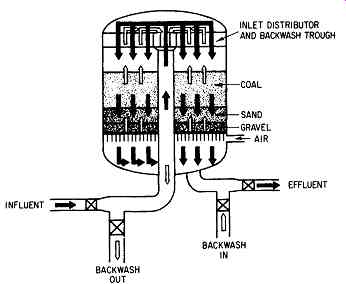
FIG. 1 Flow schematic: sand filter (De Laval, Trenton, NJ)
Coarse Granular Filters
Granular filters (see FIG. l) all depend to a varying degree on depth filtration.
The granules should be of uniform size and density to get the most effective filtration.
Some filters use more than one filter medium, the size being successively reduced so as to give series filtration. In this case, different densities must be used to allow restratification after backwashing. Flow is normally downward but may be upward.
Some filters have a moving bed, which is externally cleaned and returned continuously.
Good filtration depends on even distribution of flow across the filter area. This can be a function of the underdrain system which supports and retains the filter medium while allowing the liquid to flow through. The underdrain system and the overflow or backwash troughs must evenly distribute the backwash for complete cleaning.
Slow sand filters operate at very low flow rates of about 0.5 gal/ft^2. min and are not backwashed but scraped on the surface. Rapid sand filters produce high clarity up to about 8 gal/ft^2. min by using multiple media. High-rate filters operate up to 20 gal/ft62 9 min or higher and normally produce a lesser degree of clarity.
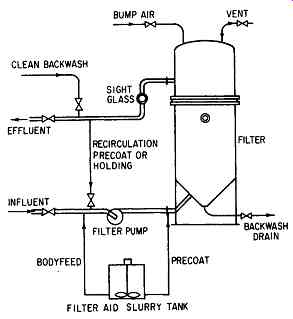
FIG. 2 Flow schematic: precoat filter.
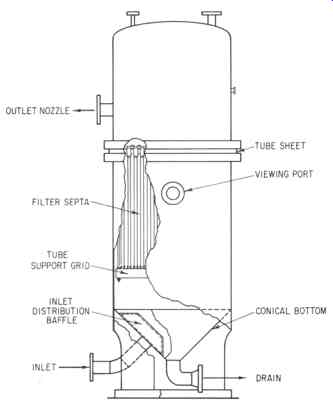
FIG. 3 Pressure precoat filter.
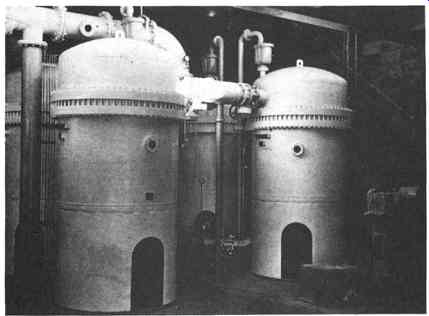
FIG. 4 3500-gal/min automatic precoat filter for municipal water treatment.
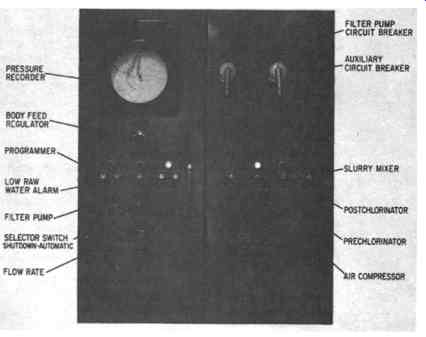
FIG. 5 Typical water-filter control panel.
Precoat Filters
A very fine, porous material such as diatomaceous earth, cellulose fibers, or perlite is used as a filter aid or medium in precoat filters (see Figures 21-2 and 21-3). The filter aid is distributed on and held by a septum or filter element. A very thin coating (about 1/16 in) is used initially and forms a precoat. The septa may be tubular or flat but generally are vertical and present a large amount of surface area within a small volume. The filter aids have the property of bridging across openings much larger than their own particle size. The cake is distributed and held on by the velocity of the liquid through it. Therefore, flow must never be stopped, and when filtration ceases temporarily, a recirculating or holding flow is established.
The filter aid itself forms the filter medium, and use of varying sizes or grades of particles will change the effluent clarity. Most removal is accomplished on the surface, but some is due to the depth filtration of the many labyrinth passages. Most filter aids are also added continuously to the incoming stream as body feed. This allows the cake to grow, entrapping the removed contaminants and maintaining porosity to increase the cycle length.
FIG. 4 shows the installation of a precoat filter for municipal-water treatment, and FIG. 5 shows the control panel for such a system.
FILTRATION WITH OTHERWISE ACTIVE MEDIA
Sometimes filtration is accomplished as an adjunct to another type of removal such as ion exchange in high-rate de-mineralizers or powdered-resin filters. Because of the expense of the other process, filtration is usually treated as secondary and should not be the controlling design factor.
BACKWASHING
Backwashing is the term applied to cleaning or renewing the filter medium by using liquid and/or air. For permanent media, backwashing dislodges the entrapped contaminants and transports them to waste. With replaceable media, the medium and the contaminants are both removed.
Liquid is used both as a washing and as a transporting medium. Generally a substantial velocity is required to perform these functions, although care must be exercised to prevent the loss of any permanent medium.
Air is used either for agitation and scouting or to create a pressure release and impart high initial velocity to break the contaminants free.
Backwashing is one of the most important aspects of filtration. The ability to renew full filtration capability after each cycle contributes to sustained effluent quality, reduced maintenance, and economical operation.
PRETREATMENT
Pretreatment is used with filtration either to condition the particulate matter by agglomeration so as to simplify or improve filtration or to precipitate soluble compound into filterable particulate material.
One of the most common pretreatments is with coagulants, such as alum or ferric sulfate, which form a charged floc to attract small particles electrostatically.
FILTER SELECTION
The selection of a filter to suit a specific process requires evaluation of many factors that are generally interrelated:
1. Required clarity of effluent
2. Maximum size of particle in effluent
3. Variation of inlet flow and/or solids concentration
4. Requirements for medium replacement or backwashing
5. Disposal of removed solids and backwash liquid
6. Use of pretreatment
7. Operating economics
Since a greater degree of filtration requires higher operating costs, it is most important that care be exercised in determining this requirement. If a cutoff particle size is absolutely necessary, a screen or fixed-pore-size filter will be needed since depth filtration can give only a nominal rating based on average percentage removal for various sizes.
Filters work best under constant conditions. Variations affect effluent, equipment sizing, and economics.
Also of major importance is tying the filter application with the backwashing of equipment. The external requirements for backwashing and the disposal of the materials all affect the selection.
The effect of any pretreatment on the operation of a filter must be considered.
Finally, when filters are capable of performing the requirements, a full evaluation of economics must be undertaken.
ECONOMICS
The costs of filtration are interrelated. They cover:
1. Power to overcome friction and filter pressure drop and to perform backwash
2. Backwash liquid
3. Medium replacement
4. Pretreatment costs, if used
5. Amortization of investment
6. Maintenance
7. Labor
Power is utilized by pumps, compressors, agitators, controls, etc. An increase in maximum pressure drop will increase power consumption but is offset by less backwash cost and medium replacement because of longer runs and by a reduction of first cost.
Backwash liquid is an expense if it costs to produce or handle it. Sometimes it is expressed in net output. Backwash air is reflected in power and investment cost.
Medium replacement is reduced by increasing the length of run with higher terminal pressure drop or lower filtration rates. However, these measures involve other offsetting costs.
With filter aid, precoat usage is a function of surface area and therefore of filtration rate as well as length of run. An increase in body-feed usage will increase length of run and can result in reduced power usage or increased filtration rate with an associated reduction in first cost.
When pretreatment is used for precipitation or treatment as an adjunct to filtration, it is an independent cost. When pre-settling or conditioning of particles is involved, costs must be weighed against the resultant reduction in other filtration costs.
For true evaluation, first cost should be amortized as a cost of the final product.
This should reflect interest rate on money, required time of depreciation, and equipment usage rate.
Maintenance includes not only equipment upkeep but also replacement of permanent filter media.
Most filtration systems can be automated, which may sizably reduce labor costs.